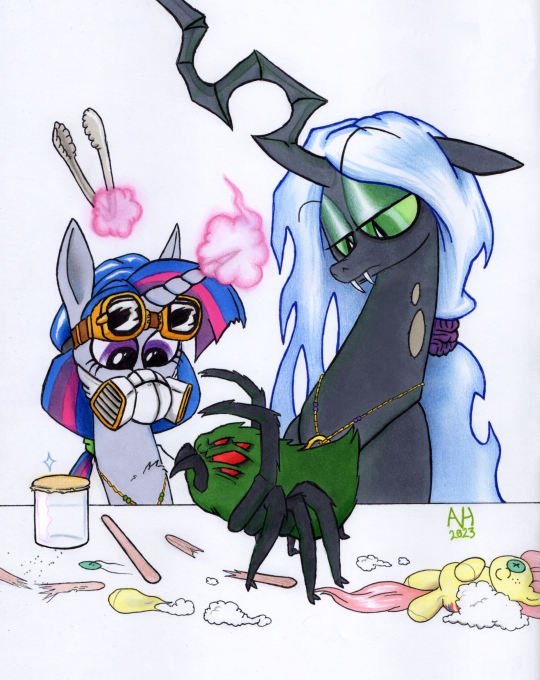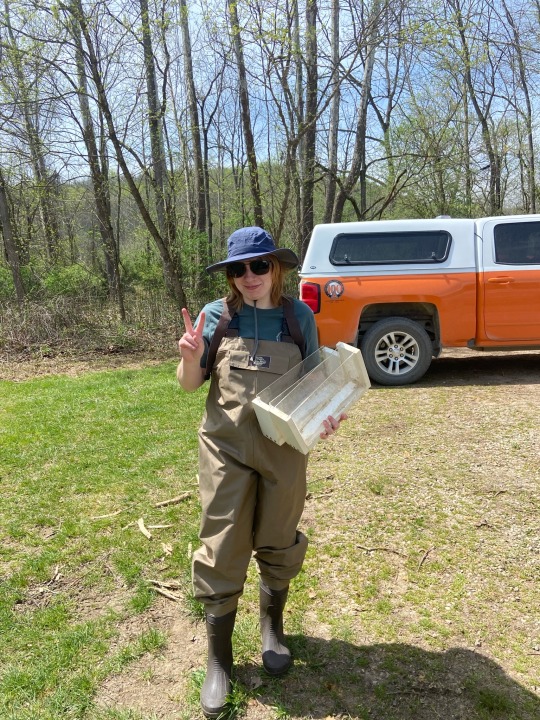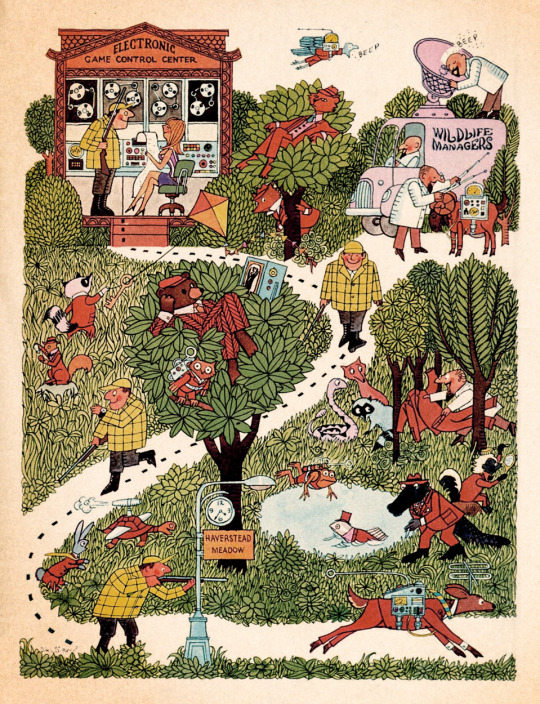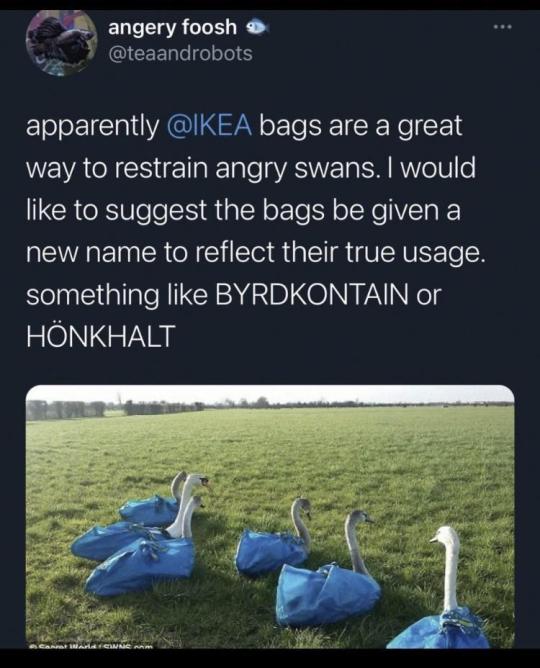#wildlife management
Text
"fuck hunters" is an uneducated statement. hunters are bigger wildlife advocates than most people, and when you make generalized statements like "fuck hunters" you are clearly referring to either a) the hunters you knew who bragged about not following the laws or b) you're clutching your pearls over people who kill animals.
hunters are extremely important for our ecosystem! they keep wild populations in check, are one of the biggest funders for conservation efforts, and help promote sustainable land practices. not only is hunting beneficial for our land, it is also a tradition for many families for putting food on their tables and just for the sport and camaraderie. there will always be hunters who break the rules, but the people who follow them are the people who help sustain wildlife for everyone to enjoy.
reevaluate your beliefs if you are jumping to say "fuck hunters" when you read or hear about someone enjoying hunting. hunters are not heartless killers, most of us are people who care about animals and maintaining their natural habitats.
#ardenposting#environmentalism#hunting#conservation#wildlife management#wildlife#falconry#wildlife education
133 notes
·
View notes
Text
With a gust of green flame Queen Chrysalis Sparkle appeared in the disaster-zone that was the West Tower royal laboratory of her wife. "Twilight? I-"
"Honeybug! Thank you for coming home early."

A wide-eyed Queen Twilight cautiously prodded at the hissing spider with a pair of tongs. It lunged and snapped at them with its chelicerae. It backed away from her, it's forelimbs raised in a threatening pose. As it sideled sideways, looking for an opening in Twilight's defenses she maneuvered the tongs like a shield.
A concerned Chrysalis regarded the scene with a raised eyebrow. "That is a Green Widow."
Twilight continued her defensive dance with the irate arachnid. "Correct!"
Chrysalis looked from the hissing creature to Twilight and back. "And why is it here in your laboratory with it's acidic spittle and venomous bite which could even kill an alicorn, like my wife?" Her horn crackled with a whisp of green flame. She drew close to her pony wife, ready to interpose herself.
"I know you're concerned, honeybug." Twilight quickly attempted to reassure her. "I'm fine- WOOP!" She ducked as a thin spray of grey mist shot past her shoulder. It's impact left a smoking buckshot pattern on the nearby bookshelf.
Chrysalis pursed her lips, her fangs scraping against the chitin in worry. "I see." In a gust of green changeling flames she created an invisible shield around Twilight.
"The potency of the green widow's venom is legendary and it's precisely why this one is here. Green widow bites in the Whitetail woods are rare but they have a very high mortality rate. I need to retrieve a sample of its venom to continue our local hospital's research into developing a viable antivenom. This little fellow was volunteered by our local wildlife wranglers for the process. Normally Fluttershy would be handling this but she's come down with the ponypox."
The spider kicked a few of the broken tongue depressors out of its way. With an angry chomp it hefted up the tattered remains of a plush doll, made to resemble the buttercream pegasus and flung it at Twilight. "I'm afraid this little fellah is not in any mood to cooperate."
"Why do you have a little plushie of her?"
"Discord left it here after our last tea-time." She traded knowing eyes with her wife and shrugged. "I didn't ask. Anyways, I was hoping you could help with this moody little guy, with your people's knowledge of the creatures of the deep woods, I theorized you might have an insight to its behavior or at least be able to hypnotize it momentarily."
Chrysalis chuckled. "I'm so glad you had the good sense to ask for my help." She kissed her wife's horn and gave it a playful nip with her fangs. "But mesmerizing it with my enchanting gaze won't be necessary, beloved."
Chrysalis turned to the spider and made a series of clicks and whispered hisses. The furious arachnid set down the beaker it had hefted overhead, prepared to hurl at Twilight. The two hissed and spat back and forth for a moment as Twilight watched in wide-eyed surprise. They were communicating. She was still learning just how helpful it was to have a wife who had literally been almost every species of creature in the world.
"You speak its language?" Her brow furrowed. "It has a language?"
The creature angrily stomped it's forelimbs as Chrysalis nodded. Occasionally it pointed at Twilight and made a particularly disgusted sound, slapping its pedipalps together.
Chrysalis sighed. "Yes. Of a sort. Most sapient beings do." There was a slight tinge of irritation to her words.
"Chrysalis!" Twilight used her magic to retrieve a pencil and note tablet from a nearby desk, excited to record this new knowledge. "This is incredible! Equestrian science knows so little about the green widow!" She hadn't even considered this discovery. "Ooooo! What did it say?"
"Well, for starters, Her name is Miss Mugglywumpus. She does not appreciate being snatched from her burrow and she is very offended by your eyelashes."
Twilight blinked. "My… eyelashes?" The spider hissed and reared up again.
"Yes." Chrysalis looked back to the angry spider. "You've been fluttering them at her in a very rude threat display."
Twilight lifted a tiny mirror to examine herself, suddenly very self-conscious. Normally she was very proud of the inky black cilia which framed her almond-shaped violet eyes. Chrysalis often complimented her on their "come-hither" quality. She supposed they might resemble antennae or some other form of limb to the right perspective.
Her changeling wife continued. "Not only that but your aggressive blinking has been signaling very crass remarks about her hygiene, the size of her abdomen and capacity to spawn a respectably-sized brood."
"I WHAT?!"
Chrysalis motioned to the creature with her serpentine eyes. It glared up at Twilight with all 8 of its crimson peepers. Fangs glistening, forelimbs folded across it's thorax. If there was any expression in a spider's body-language which might indicate it had been the recipient of a potent yo-mama slam, this looked to be about right.
Twilight gave a dejected sigh as Chrysalis placed a consoling hoof across her withers.
She had expected today to be quite eventful. However, as Rainbow Dash might say, she did not have 'sparking a first-contact disaster with her face' on her bingo card today.
#my art#my story#traditional art#mlp au#mlp g4#my little pony#lesbian#twisalis#twilight sparkle#queen chrysalis#love#lgbtq#science#scientist#wildlife management#eternal courtship#ashleyfableblack
66 notes
·
View notes
Text
TW: ANIMAL DEATH/DISMEMBERMENT; GRAPHIC IMAGES IN LINK
This is why house sparrows, or HOSPs, must be culled on sight. Buy a trap, take them out.
They are drastically reducing our songbirds in North America, any cavity-nesting songbird is at risk of being attacked and killed on their nest by a territorial house sparrow.
449 notes
·
View notes
Text
The Emu War began 91 years ago today.
Total madness.
What a fucking shitshow that was!
#dougie rambles#personal stuff#history#australia#emu war#wtf#what#no context#this is real#emu#flightless birds#western australia#colonialism#weird history#australian army#wildlife management#1932#1930s#great depression#interwar period#military#military history#what a shitshow
19 notes
·
View notes
Text




Caught and released a gorgeous rainbow trout in class today!
#gfdelmar og#nature aesthetic#naturecore#granola girl#granola aesthetic#creeking#adventure#adventurecore#icthyology#fish#rainbow trout#trout#fishing#wildlife management#wildlife biology#outdoorsy#outdoors#outdoor recreation
25 notes
·
View notes
Text
Gaaah in my wildlife management class we were going over paleoindigenous peoples and the concept of ‘localized overexploitation’ which as a gut reaction feels like literally just a way to say ‘sustainable use but in a not “correct” way’ (correct being european). Like, if you’re using the resources, or driving an entire buffalo herd off of a cliff, thats maybe wasteful from our perspective but like, there are other herds of bison. They aren’t gonna disappear. And also you’re leaving the area, so its gonna be fine. Like, i dont get how overexploitation can be local, it has to be large scale because an ecosystem is like a lake and you are a person with a bucket, you are not going to drain the lake because you took too much from one area and left. Idk. Also this is submitting to the premise which might in and of itself be false.
3 notes
·
View notes
Text
Freezeout Lake, Montana




This Wildlife Management Area (WMA) offers free camping with some really great company. We look for these WMA's because they always offer wonderful surprises. Most people come to view the Snow Geese in early March flying in from California. Over 300,000 strong. They rest up here and then continue on their journey to Alberta and central Saskatchewan in Canada. We came in the off season when there is no crowd of bird watchers. Just nature, in the raw, at her best. Even in the down time this lake doesn't disappoint.
6 notes
·
View notes
Link
I went through a strong community debate about this issue a couple of years ago, as an active advocate for the deer. The community anger has gone away, the noise is gone and the deer continue to live in the adjacent forest (owned by the Forest Preserve District of Cook County, Illinois) and stroll into the neighborhood to eat hosta and other tasty landscape things. Several important things I learned during the debacle. One, motions rule, particularly when encouraged by loud-mouthed, insensitive and stupid (I am intentionally using that word) politicians. Two, people lie, big time and exaggerate their persecution by the deer (you know, dead children from lyme disease, heart attacks watching deer eat hosta, etc.) Three, old people are more worried about their fucking gardens (i.e., hosta) than wildlife, and the old people are riled up by the politicians described above. Four, science ought to rule, but I learned that bureaucratic survival and eating donuts are more important than science.
Excerpt from this story from Grist:
Across the United States, the deer population has ballooned in recent years to an estimated 30 million. Once a rare sight, deer have become something of a pest, spreading disease and causing fatal car accidents at an increasing rate. But for people like Arnow, who has a background in environmental science, the biggest issue is the impact of too many deer on the forest. With fewer bears and mountain lions around to keep their numbers in check, deer can reproduce with abandon and decimate the young trees and native plants that live beneath forest canopies.
“[If] we have a beautiful overstory of mature oak trees [but] zero oak saplings in the woods, there’s no future for the forest,” said Arnow, whose concern has turned into an obsession with herd management.
To protect these crucial habitats and carbon sinks in order to help keep climate change from spiraling further out of control, scientists say deer population density in much of the country must be drastically reduced. “For this thing to work, you have to drive the deer numbers down to a very low level,” said William McShea, a wildlife ecologist at the Smithsonian Conservation Ecology Center. “You can’t just have casual hunting.”
But with an aging population of hunters, only 41 percent of whom will shoot even one deer in a given season, it’s unlikely that recreational hunting as we know it could do the trick. That means the field is wide open for a shift in wildlife management.
The deer population in the United States has been exploding since the 1940s, a few generations after conservation-minded sportsmen began pushing the government to establish wildlife preserves and put major restrictions on hunting. Commercial hunting was made all but illegal, and over time, recreational limits were set depending on factors such as the time of year and sex of animal (there are often more restrictions on hunting females). The goal was to repopulate the deer, whose numbers had plummeted from a pre-settlement count of between 24 and 62 million to an estimated 300,000.
This “North American Model of Wildlife Conservation,” as it came to be known, worked well — too well. As American deer populations grew, they began to have an outsize effect on their habitats
9 notes
·
View notes
Text
Will Wolves Decimate Elk Herds
There has been a lot of discussion about the elk herds since the recent release of wolves in Colorado. Hunting advocates are constantly complaining that wolves will decimate the elk herds, destroying a way of life for outfitters (hunting guides), and hunters.
So that got me to thinking about numbers and common sense. Colorado Parks and Wildlife (CPW) is following through on a Colorado voter…

View On WordPress
#books#books about wildlife#books about wolves#books for sale#books worth reading#colorado#Elk#elk herds#novel#photography#photography books#Spirit of the Wolf#wildlife conservation#wildlife management#wildlife photography#wolf reintroduction#wolf release#wolves
0 notes
Link
0 notes
Text

The future of hunting in America.
#hunting#wildlife & fisheries#wildlife management#wildlife management areas#wildlife#hunting & fishing#deer hunting#vintage illustration
1 note
·
View note
Text
Recovery Efforts for Rare Tortoise Species Receive Boost
https://headlinehorizon.com/World/Environment/588
Read about the latest news on the release of Bolson tortoises as part of a long-term conservation effort. Discover the importance of their habitat, the challenges they face, and the hope for a brighter future.
#Recovery Efforts#Conservation#Endangered Species#Bolson Tortoise#Habitat Preservation#Wildlife Management
1 note
·
View note
Text
Enteritis: Still a Problem in Dairy Calves

Abstract
The neonatal phase of calves is a phase that needs extra care due to newborns’ vulnerability. Enteritis - an inflammation of the intestinal mucosa, resulting mainly in diarrhea - stands out among the conditions that affect animals in this period. Enteritis are responsible for huge losses in cattle breeding, especially in the early stages of rearing. Besides the losses caused by mortality, there are also expenses with veterinarians, treatments and decreased performance of the animal throughout its productive life. The present study aimed to perform a review of diarrhea in newborn calves.
Keywords: Neonatal diarrhea; Infectious agents; Dairy cattle
Abbrevations: ETEC: E. coli enterotoxigenic; EHEC: E. coli enterohemorragic; BVDV: Bovine Viral Diarrhea Virus
Introduction
The neonatal period in cattle - that goes from birth to 28 days of age - is especially important from a health point of view, since approximately 75% of losses in young calves occur in this phase [1], and the first week of life is considered the most critical phase, with 50% of losses. Therefore, maintaining the health of calves is highly related to the hygiene of the place where they live, as they are extremely sensitive to environmental pathogens [2]. Lorenz [3] report that there are several measures to maintain calf health from birth to weaning, including the provision of good quality colostrum in adequate quantity in the first hours after birth and the need to emphasize the prevention of diseases of the gastrointestinal tract and respiratory system. Among the main conditions that cause loss in the early stages of calves development are pneumonia, malformations, central nervous system diseases, and enteritis [4]. Enteritis is clinically mainly manifested by diarrhea and stands out due to its high mortality rate [2,3,5,6], since it is commonly difficult to recover because it is almost always accompanied by malnutrition [7].
Diarrhea is a complex multifactorial disease involving animal, environmental, nutritional, and infectious agents and it is a major cause of mortality, morbidity, and economic loss in cattle worldwide [8], because the treatment of affected calves is slow and impacts on growth, weight gain to weaning and loss of genetic potential of recovered animals [9]. Due its clinical and economic importance and due the preventive measures are often neglected, it is necessary an approach on this subject, to broaden the knowledge and to promote a better conduct regarding the prevention, diagnosis and treatment of the affected animals. Therefore, the present study aimed to review diarrhea in newborn calves.
Diarrhea in Newborn Ruminants
Newborn calf diarrhea is a disease of great impact on the economic viability of cattle herds worldwide [10] (Table 1). The economic impact caused by this condition is significant, although many new intervention strategies, such as vaccine development drug development and herd management, have been developed and implemented to minimize it [2]. In this sense, the veterinarian needs to assess the status of immunoglobulins in calves, feeding, shelter, environmental disinfection, hygiene and sanitary management, to prevent neonatal deaths caused by the disease [11]. The processes involved in the pathophysiology of diarrhea are related to intestinal secretion/ hypersecretion, nutrient bad absorption and digestion, osmolarity, abnormal intestinal motility, increased hydrostatic pressure, and gastrointestinal inflammation [12-21], which may occur singly or, more commonly, by the combination of two or more factors of these mechanisms [22,23].
Secretory diarrheas occur due to abnormal stimuli to the intestinal mucosa crypts that may be caused by the action of enterotoxins and/ or the action of inflammation mediators such as prostaglandins, causing an imbalance in physiological processes, like secretion and intestinal resorption, with consequent diarrhea [24]. Diarrhea is typically profuse without blood or effort, and signs in affected calves include depression, weakness, and sometimes shock and death secondary to hypovolemia and mild acidemia [25]. The difference in osmolarity with increased concentration of solutes within the intestinal lumen, promotes greater absorption of water by the lumen, thus resulting in dehydration of the animal. Osmotic particles include poorly digested disaccharides and increased levels of D-lactate from bacterial fermentation of unabsorbed nutrients entering the colon. Reduced intestinal transit time can lead to poor digestion and malabsorption due to inadequate time for digestion and absorption of ingested food, impaired fluid resorption has a major impact on fluid balance [23].
When a calf has diarrhea, there is a huge loss of fluids and electrolytes from its body. Thus, the consequent dehydration and the appearance of metabolic acidosis are the main causes of death of these animals [26]. This happens partly because the evaluation of the animal is generally based only on clinical examination, and a more detailed approach to assessing the degree of electrolyte disturbance and acidosis through blood gas analysis is lacking or not [27]. Although this condition being common in rural properties, treatment is usually inadequate and / or insufficient, because the administration of antibiotics and anti-inflammatory drugs do not correct the hydroelectrolytic disorders and acid-base [28]. Therefore, in order for the recovering of the animal, these parameters must be measured and corrected quickly, enabling the return to homeostasis. The high frequency and persistence of calf neonatal diarrhea has attracted the interest of many researchers. The multifactorial etiology (bacteria, viruses and protozoa) influenced by nutritional and environmental factors, as well as difficulties in the precise diagnosis of the agent and the failure of treatment has required the adoption of prophylactic measures, such as cow hygiene, management and vaccination [8].
Diarrhea Infectious Agents
Diarrhea is a condition of complex multifactorial etiology, influenced by infectious, nutritional and environmental factors, as well as improper management practices. Causes include toxins, bacteria, protozoa, viruses, and management / environmental factors such as overfeeding, low temperature, poor hygiene, colostrum deprivation, and individual susceptibility of the animal [8]. Numerous infectious agents have been implicated in diarrhea of calves, such as Escherichia coli, Salmonella spp., Cryptosporidium spp., Rotavirus and coronavirus. Coinfection is commonly seen in diarrheal calves, although a single primary pathogen may be the cause in some cases. The non-infectious causes of origin are related to improper management and poor hygiene of the environment in which the animals are placed. The incidence of the disease may vary according to the geographical location of the farms, farm management practices and herd size [2]. Rotaviruses, coronaviruses and cryptosporides, the most commonly recognized enteric pathogens of calves, all produce intestinal villi atrophy, intestinal bacterial overgrowth, malabsorption, and osmotic diarrhea [25].
In general, infections caused by viruses and protozoans tend to damage the intestinal mucosa promoting alteration in intestinal absorption due to damage to intestinal cells, compromising the normal absorption of nutrients, fluids and electrolytes, without alteration in intestinal secretion [22]. Rotaviruses are the most common cause of diarrhea in newborn calves and are often involved in co-infections with other agents [11,23,25]. Clinical signs usually appear 1 to 3 days after infection lasting 5 to 9 days [23]. High environmental contamination, herds with high numbers of animals and management that favors the transmission of the agent, associated with an inexpressive immunization rate, provide favorable conditions for the spread of rotavirus in dairy herds in Brazil, justifying the prevalence and difficulty to control the infection and the spread of the virus [28]. The incidence of many etiological agents varies with the calf’s age (Table 2) and this is useful for establishing the probability of a particular agent being involved and it is generally impossible to establish a definitive field diagnosis [11].
Diarrhea may result from hypersecretion or decreased absorption. Enteropathogenic strains of E. coli are occasionally causing diarrhea in calves [29]. Enterotoxigenic E. coli, Salmonella spp, Campylobacter spp. and rotavirus cause diarrhea by secreting enterotoxins that stimulate increased intestinal secretions, while protozoa and enteric viruses cause epithelial destruction of the absorptive cell villi. Enterotoxigenic E. coli produces profuse watery diarrhea, mainly in calves older than 4 days of age and occasionally in older calves. The F5 antigen may produce a mild clinical syndrome characterized by diarrhea, dehydration and weakness in calves from 1 to 4 days of age with rapid course and may progress from healthy to decubitus and death from 6 to 12 hours [11]. Salmonella spp. is an important causative agent of diarrhea and septicemia in dairy calves and the depression caused in the animal is probably due in part to endotoxemia, not just dehydration and acidosis. Campylobacter jejuni and Campylobacter fecalis are believed to be of minor importance in calves and lambs [11].
Cryptosporidium is cited as the main agent of diarrhea in calves, not only as an opportunistic agent, but also as a primary agent. Preventive measures should be taken related to the management of cows at the time of giving birth, avoiding the agglomeration of animals and environmental contamination to reduce economic losses, and to avoid the risks to public health arising from infection [24]. The recognition of enteropathogens guides the adoption of effective prevention and control measures, besides alerting to public health reflexes, due to the zoonotic potential of several of these enteric pathogens [29,30].
Treatment
Physical examination of the diarrheal calf comprises the first step in establishing the therapeutic approach, requiring the determination of the presence of any intercurrent disease. Treatment of simple cases depends on the estimative of dehydration (Table 3), severity of acidosis, likelihood of concomitant infection, presence or absence of hypothermia and hypoglycemia [11]. The most common causes of death are dehydration and acidosis. Blood gas analysis will accurately determine the degree of metabolic acidosis [29] (Table 4). Therefore, the immediate goal in treating depressed calves is to restore them to physiological systemic status. The estimated severity of dehydration can be combined with estimates of diarrhea loss and maintenance of essential functions to manage total daily fluid requirement [11,29].
Abbreviations: pCO2, carbon dioxide pressure; pO2, oxygen pressure; HCO3-, plasma bicarbonate concentration; TCO2, total carbon dioxide in plasma; BE, base excess in the blood; StB, standard bicarbonate blood concentration; SatO2, blood oxygen saturation. Fonte: Lisbôa et al. [31]. Replacement may be administered intravenously or orally, reminding that for the latter one should be increased by 60 to 80% for partial fluid absorption [11,29]. If performed early in the disease, oral replacement can be highly effective and inexpensive. In animals with severely impaired intestinal motility, the intravenous way may be more effective in correcting hydroelectrolytic imbalances than oral administration [23]. Success of therapy is monitored based on clinical signs of calf and restoration of urination [11]. Another point to consider in chronically diarrheal calf is the need for nutritional support. When a samll quantity of milk or solid food is ingested, energyrich oral electrolytes may be used to maintain the body condition of the animal. Stop giving milk can reduce the severity of diarrhea and depression in severe diarrhea, because malabsorption exacerbates diarrhea by the osmotic effect of unabsorbed milk nutrients and also promotes bacterial proliferation and possibly poor fermentation generating organic acids. However, stop giving milk reduces weight gain [11].
Antibiotic use is frequent in the treatment of diarrhea, although few agents respond to antimicrobials, viral and parasitic agents are not directly sensitive to antibiotics. Their indiscriminate use promotes the selection of resistant strains and complicates future therapeutic efforts. However, they can attenuate clinical disease, decrease the release of pathogens to the environment and animal mortality [11,29]. Some treatment protocols include the use of anti-inflammatory drugs to help reduce the secretory effects of some agents [11]. The use of non-steroidal anti-inflammatory drugs (NSAIDs) should be restricted in dehydrated animals and administered only when the patient is sufficiently hydrated [23]. The use of probiotics, oligosaccharides and intestinal protectors is also cited, and the use of gastrointestinal motility modifiers is contraindicated, as the reduction in motility will lead to the accumulation of bacteria and pathogenic toxins [29].
Prevention
The principles of prevention are based on ensuring adequate colostral intake, specific help and nonspecific immunity, reduction of the possibility of introduction / dissemination of infectious agents [11]. Colostrum is important in preventing morbidity and mortality of diarrheal calves. Colostral antibody is responsible for the low incidence of rotavirus infections in calves under 4 days of age. Vaccination of pregnant cows is important to increase colostral immunity. Colostrum privation, lack of maternal instinct, and early separation of cow and calf are major causes of failure to transfer immunity in dairy calves [11]. Prophylactic measures include separating calves from each other with enough space to prevent contact and infection through contaminated feces and urine. All feeding facilities and equipment (buckets and bottles) must be maintained with strict hygiene conditions. There is not much difference between the patterns of disease development and the prevention of calf diarrhea according to each etiological agent. Knowledge of the causal pathogen (s) is important to accurately avaliate the current status of the affected property and to develop new interventions [2].
To Know More About Journal of Dairy & Veterinary sciences
Please click on: https://juniperpublishers.com/jdvs/index.php
For more Open Access Journals in Juniper Publishers
please click on: https://juniperpublishers.com/index.php
#wildlife management#wild life rehabilitation#wildlife diseases#dairy microbiology#Juniper Publishers#open access journals
0 notes
Text
I'm doing research into bear management tactics and shoutout to Kerry Gunther for having everything I need public and online unlike SOME people.
0 notes
Text
Has anyone encountered this: a state wildlife/natural resources agency has job listings that are completely vague - there's a title which has a general description, a salary range, and even a range of potential education/experience requirements (i.e."typically requires a bachelor's and 0-1 years experience"). Does not tell you where job is based or says "multiple positions in various locations". Do you just apply and they contact you if they have a job they think you're suited for? This seems like a waste of everyone's time. Encountered this on MS and AL websites - not my top choices for where to work but trying to cast a wider net across the southeast
#wildlife careers#wildlife#wildlife management#natural resources careers#idk what to tag this as someone help me please i tried to google this question and nothing
0 notes
